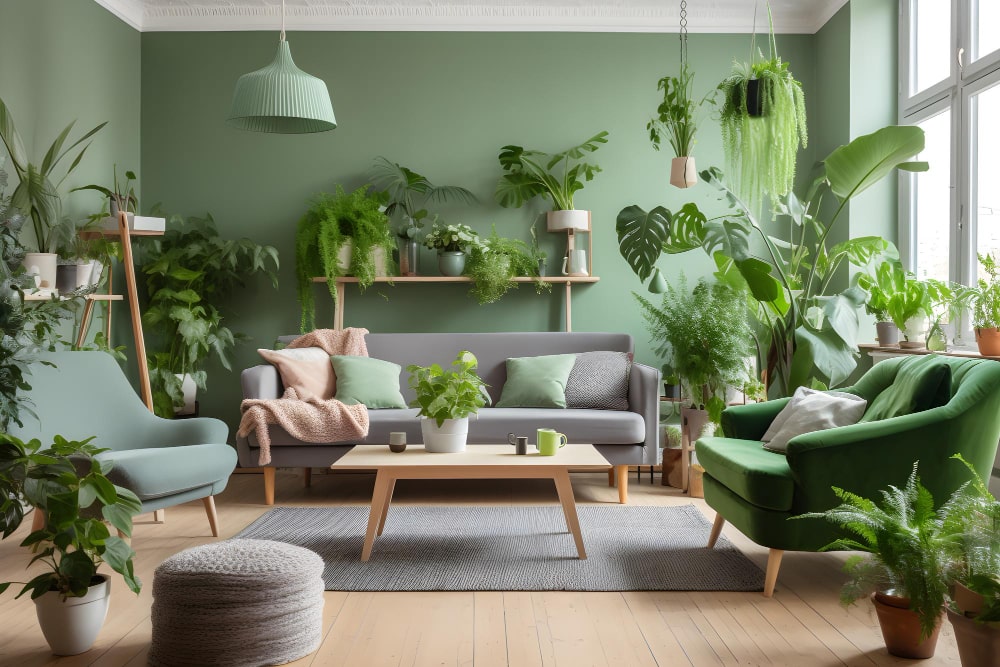
If you enjoy being outside, having some plants around is essential no matter where you live or your circumstances. However, plants require a lot of love and care in order to grow and eventually bloom. But sometimes, we aren’t as free as we ought to. Still, with careful selection, we can identify best indoor plants that thrive inside your home with minimal work. If you’re looking for greenery that thrives with minimal attention, consider these top 10 low-maintenance indoor plants.
In this article, I’ll walk you through the top 10 indoor plants that require minimal maintenance so you can have your own urban jungle with little effort. From snake plants to aloe vera, Chinese evergreen to rubber plants, this list has you covered. With the right light and occasional watering, these house plants will thrive in your home without needing much from you. So if you’re ready to add life to your living space in the simplest way possible, keep reading to discover your new low-maintenance plant companions.
1. Snake Plant (Sansevieria trifasciata):
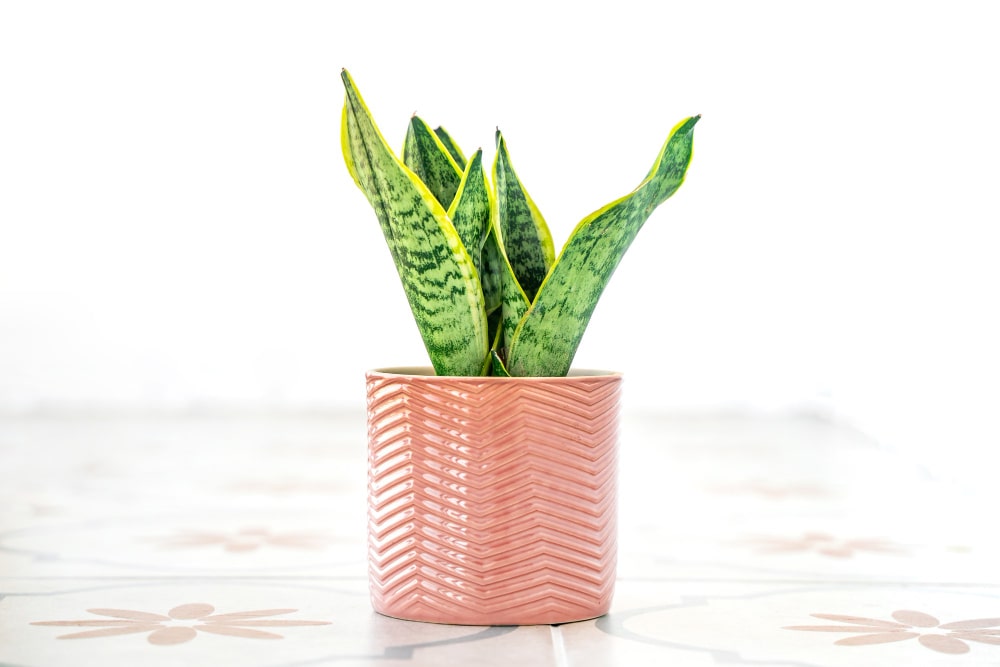
The snake plant—with its upright, sword-like leaves—is nearly indestructible.
a- Water
Only when the top inch of soil is dry. These guys can go weeks between drinks!
b- Light
Low to bright light. A snake plant thrives on neglect and adapts to most conditions.
c- Fertilizer
During the growing season. Use a balanced fertilizer once a month.
d- Pests/Diseases
Watch for spider mites or mealybugs. Wipe them off with a damp cloth and you’re done.
Snake plant is known for:
Known for its air-purifying qualities, the snake plant can thrive in low light conditions and only requires occasional watering.
2. ZZ Plant (Zamioculcas zamiifolia):
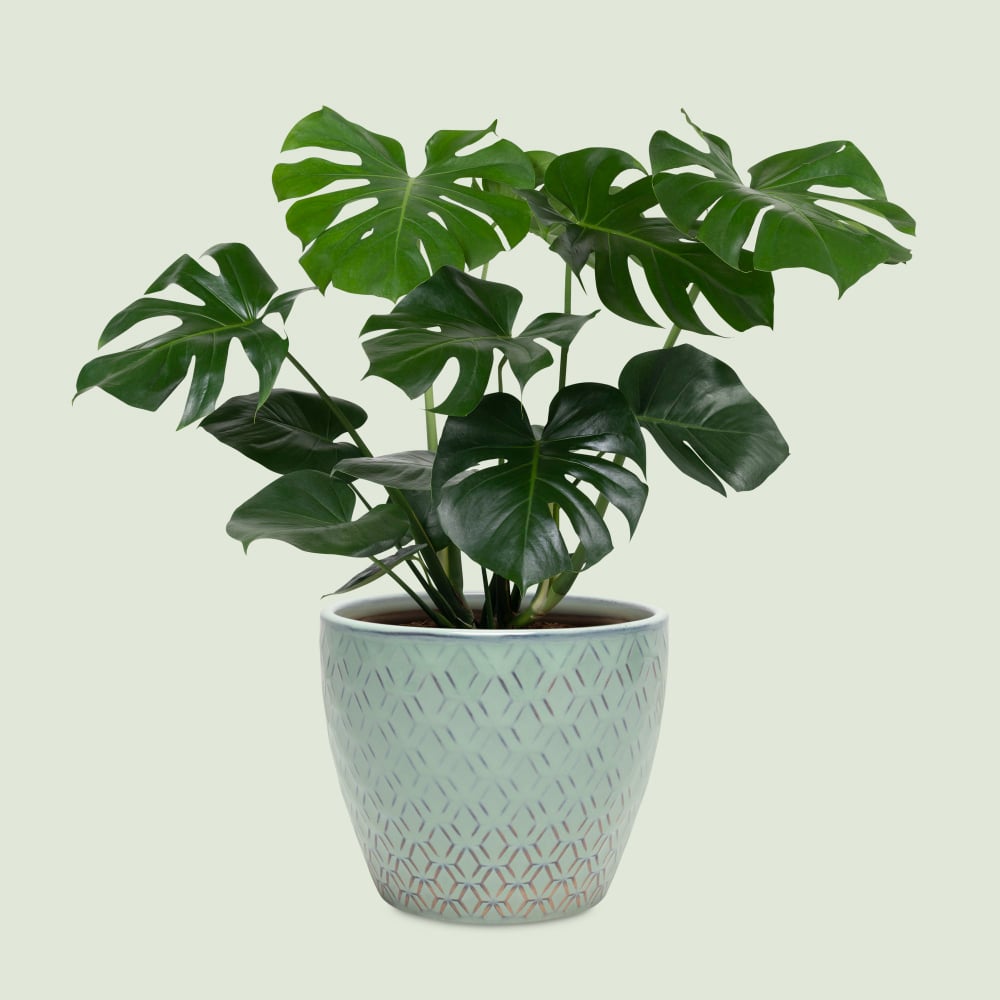
The ZZ plant is a perfect pick if you’re looking for a no-fuss houseplant. This easygoing evergreen thrives on neglect. Only water when the top few inches of soil are dry and place it in a spot with indirect light. That’s it! The ZZ can tolerate low light, but growth will slow. No need to fertilize in winter. Come spring, feed monthly. With its dark green leaves and upright form, the ZZ makes a great desk or table plant. Best of all, it naturally removes toxins from the air. This hardy, hands-off houseplant is ideal for beginners and busy folks alike.
ZZ plant is known for:
ZZ plants are incredibly resilient, tolerating low light and irregular watering. They’re a favorite for beginners.
3. Pothos (Epipremnum aureum):

This classic houseplant is almost indestructible. Pothos only needs moderate light and water to thrive. Place it in a spot with indirect sunlight from an east- or west-facing window. Water when the top inch or so of soil is dry. Let it dry out a bit between waterings since overwatering can cause root rot.
During the growing season in spring and summer, fertilize your pothos every few weeks. Use a balanced, all-purpose fertilizer at 1/2 the recommended strength. In fall and winter, reduce feeding as growth slows down.
Pothos can tolerate some neglect, but regular pruning will keep it looking full and promote new growth. Trim off any dead or dying leaves and stems as needed. You can also prune pothos to control its size and shape.
Pothos does well in average indoor temperatures. It can tolerate a range of 65 to 85°F. Repot if it becomes pot bound, moving up just one size.
This popular house plant cleans the air, removes toxins like formaldehyde, and brings natural beauty to any space. When given the proper care, pothos will reward you with years of virtually carefree enjoyment.
Pothos plant is known for:
Pothos vines are virtually indestructible. They can thrive in various lighting conditions and don’t mind if you forget to water them occasionally.
4. Peace Lily (Spathiphyllum):
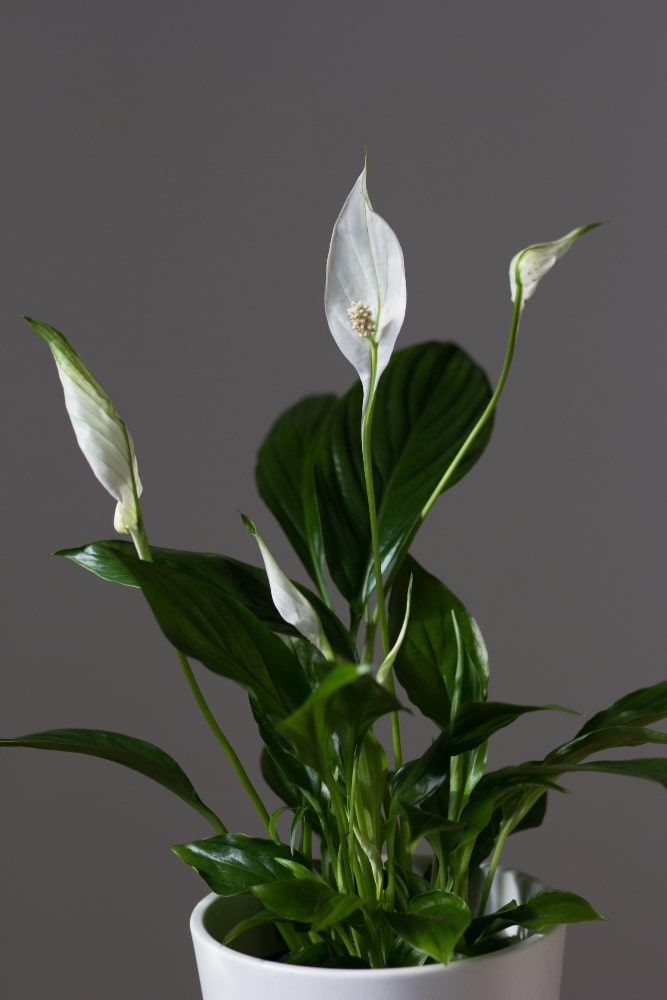
The Peace Lily is one of the easiest houseplants to care for. With its lush green leaves and beautiful white flowers, the Peace Lily brings a sense of tranquility to any space.
a- Water
Water the Peace Lily when the top inch or so of soil is dry. Never leave it sitting in water, as this can lead to root rot. Allow the water to drain freely from the drainage holes at the bottom of the pot after watering.
b- Light
Place your Peace Lily in a spot with bright, indirect light. It can tolerate some shade but may produce fewer flowers. Direct sun can scorch the leaves, so avoid south-facing windows.
Peace Lily plant is known for:
Peace lilies are known for their air-purifying abilities and white, elegant blooms. They’ll let you know when they need water by drooping slightly.
5. Spider Plant (Chlorophytum comosum):
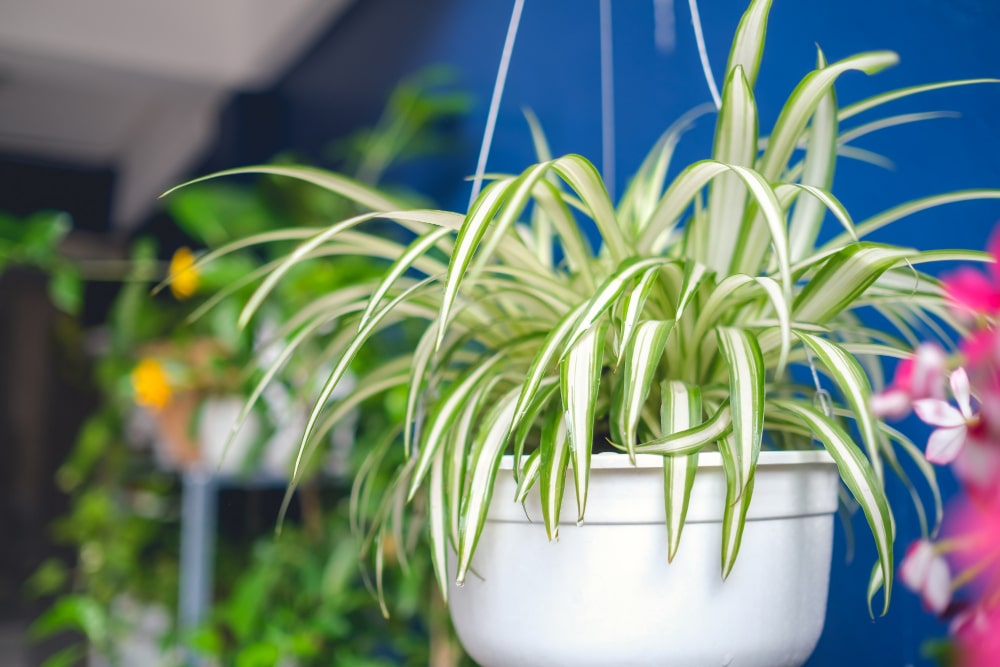
The spider plant is one of the easiest houseplants to care for.
a- Light
Place your spider plant in a spot with indirect sunlight, like a few feet from an east-facing window. Too much direct sun can burn the tips of the leaves.
Spider Plant plant is known for:
Spider plants are adaptable and can thrive in different light levels. They produce “pups” that you can replant to grow new spider plants.
6. Aloe Vera (Aloe barbadensis miller):
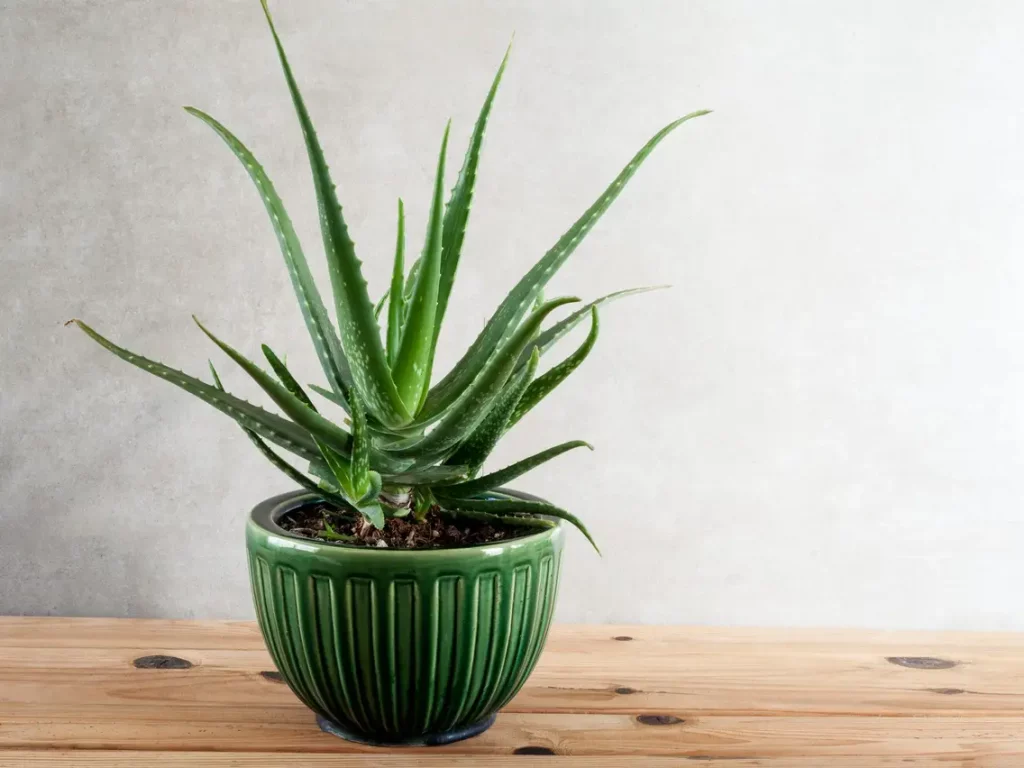
The Aloe Vera is the perfect plant for the neglectful gardener. This succulent thrives on neglect. You really only need to water it when the top few inches of soil are dry. Too much water can actually harm it, causing root rot, so err on the side of underwatering.
Aloe also does well with limited light, so place it near an east- or west-facing window. This sun-loving plant appreciates any exposure to UV rays. Lack of light will cause the leaves to become thin and curved inward. During the growing season in spring and summer, fertilize your aloe every few weeks. Use a balanced fertilizer and dilute to 1/2 the recommended strength.
This hardy succulent requires minimal pruning. Only remove dead or dying leaves by cutting them at the base. When repotting, go up just one size and use a well-draining cactus potting mix.
With the right light and occasional watering and fertilizer, an aloe vera plant can thrive for years. Its gel-filled leaves will be ready whenever you need relief from minor cuts, burns, and skin irritation. This easygoing houseplant will reward your benign neglect with its sculptural form and practical properties.
Aloe Vera Plant plant is known for:
Aloe vera not only looks stylish but also has healing properties for skin. It prefers bright, indirect light and infrequent watering.
7. Rubber Plant (Ficus elastica):
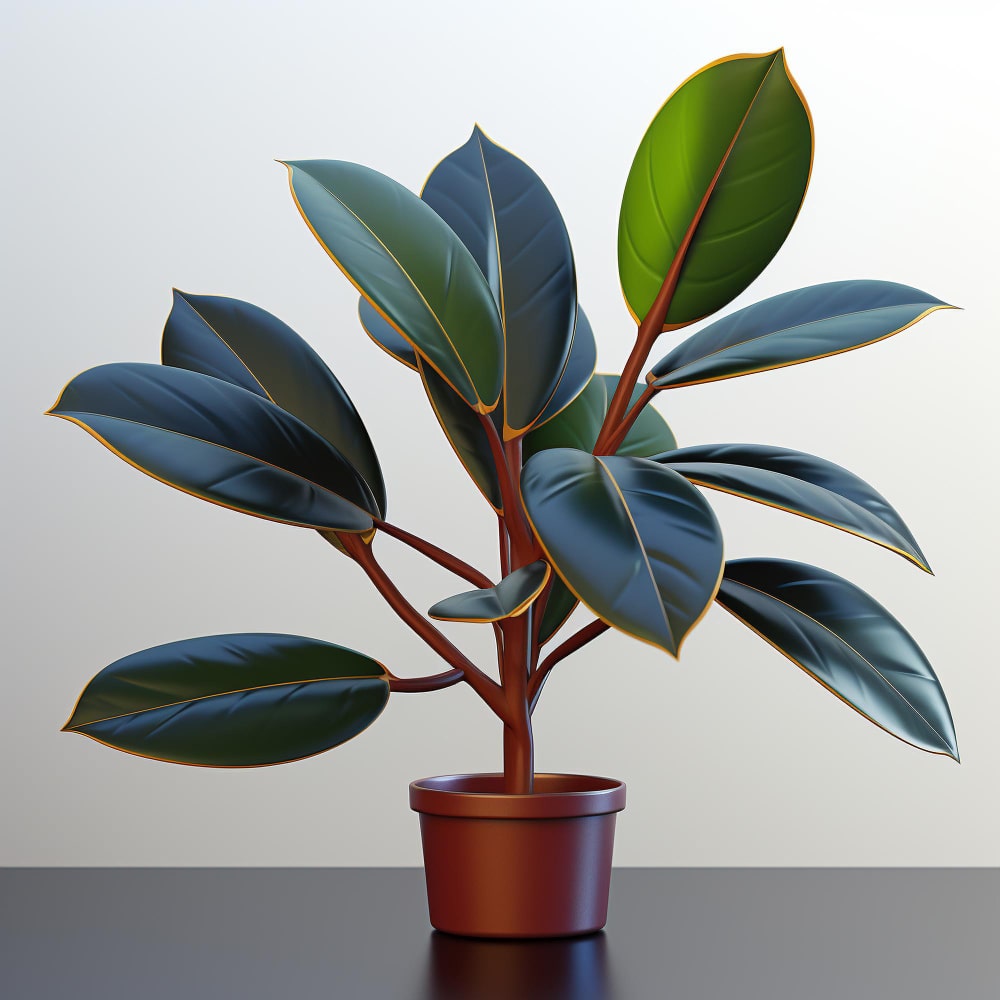
The Rubber Plant is another popular houseplant that requires minimal maintenance to thrive.
a- Light
Place your Rubber Plant near a window that gets bright, indirect light. Too much direct sun can scorch the leaves. If the leaves start dropping or the plant develops leggy growth, it may need more light.
Rubber Plant plant is known for:
Rubber plants are sturdy and can tolerate low light conditions. Allow the soil to dry out between waterings.
8. Chinese Evergreen (Aglaonema):
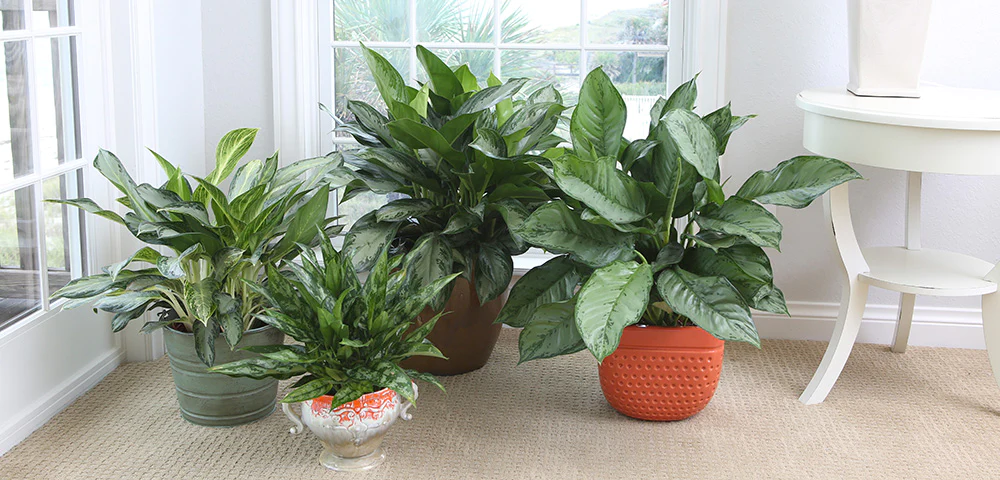
The Chinese Evergreen is a perfect low-light houseplant that can thrive for years with minimal care.
a- Light
Place your Chinese Evergreen in a spot with indirect light, such as near an east-facing window. Too much direct sun will cause its leaves to burn and turn brown.
Although it can tolerate some neglect, for the best growth provide moderate light and water when the top few inches of soil are dry. During the growing season in spring and summer, fertilize every few weeks. In the fall and winter, reduce feeding and watering as growth slows.
Repot only when necessary, about every 2-3 years. When repotting, move up only one size and use a well-draining potting mix. These hardy plants can live for many years, so choose a container that complements your décor.
With the right balance of light and moisture, this popular houseplant will reward you with beautiful foliage for years to come. Its minimal needs make it perfect for beginners and ideal for spots in your home where other plants struggle.
Chinese Evergreen Plant plant is known for:
Chinese evergreens come in various attractive patterns and thrive in low to moderate light. Water them sparingly.
9. Cast Iron Plant (Aspidistra elatior):

The Cast Iron Plant is one tough cookie. This hardy evergreen perennial has dark green, strap-like leaves and can tolerate neglect like no other houseplant.
Cast Iron Plant Plant plant is known for:
True to its name, the cast iron plant is incredibly tough and can handle low light and neglect.
10. Jade Plant (Crassula ovata)

The jade plant is a succulent that stores water in its thick leaves and stems. This built-in reservoir means you only need to water it occasionally, letting the top few inches of soil dry out between waterings.
a- Light
Place your jade plant in a spot with plenty of bright, indirect light—an east or west facing window is ideal. Too much direct sun can burn the leaves.
b- Water
Water your jade plant when the top few inches of soil are dry. Pour water through until it flows out the drainage holes, then discard any excess water. Letting the plant sit in water can lead to root rot.
c- Fertilizer
Fertilize during the growing season. Use a balanced fertilizer once a month, diluted to 1/2 the recommended strength. Reduce or stop feeding in the fall and winter when growth slows.
d- Repotting
Repot if roots are crowded, about every 2-3 years. Move up one size and use a well-draining cactus potting mix.
e- Pruning
Prune to shape, pinching off new growth. Wear gloves, as the sap can irritate skin.
By following these simple tips, your easy-going jade plant will thrive for years to come with minimal fuss or muss. All it really wants is for you to mostly leave it alone!
Jade Plant Plant plant is known for:
Jade plants are known for their resilience and are often associated with good luck. They prefer bright, indirect light and infrequent watering.
Tips for Caring for Low-Maintenance Plants:
To keep your low-maintenance plants happy and healthy with minimal effort, follow these simple tips:
a- Lighting
Most low-maintenance plants can thrive with indirect light from an east- or west-facing window. ZZ plants and snake plants actually prefer shade and can do well with little natural light.
b- Soil
A well-draining potting mix, like one containing perlite to improve drainage, is key. These plants don’t like to sit in water, so make sure there are drainage holes in the bottom of the pot.
c- Pests
Inspect plants regularly for common pests like spider mites, mealybugs, and scale. You can control them by spraying plants with a neem oil solution or insecticidal soap. Isolate infected plants to avoid spreading pests to others.
d- Pruning
Most low-maintenance plants require little pruning. You can trim peace lilies to improve their shape and prune pothos to encourage new growth. Remove dead or dying leaves on all plants to keep them looking tidy.
Providing the proper conditions for your easy-care plants—and avoiding extremes—is the key to success. With the right light, soil, pest control, and occasional pruning, your low-maintenance urban jungle will thrive with minimal effort on your part.
Conclusion
So there you have it, your very own low-maintenance indoor jungle to liven up your living space. With these hardy houseplants, you’ll be enjoying the benefits of greenery around your home without the hassle of complicated care. No more obsessing over the perfect amount of sunlight or feeling guilty for forgetting to water them.
These plants can thrive on their own with minimal effort on your part. While they may not need much from you, giving them a little TLC when you can will help them flourish. An occasional dusting of the leaves or misting with a spray bottle can go a long way. Your newfound green thumb won’t believe how easy it is to become an indoor gardener with this collection of laidback lovelies. So go ahead, pick out a few favorites and start creating your own private oasis. Your space and your sanity will thank you.
Low-maintenance indoor plants can bring the beauty of the outdoors into your home without the stress of constant care. Whether you have a busy lifestyle or are new to plant parenting, these green companions are sure to thrive with minimal attention, enhancing your indoor environment and well-being.

